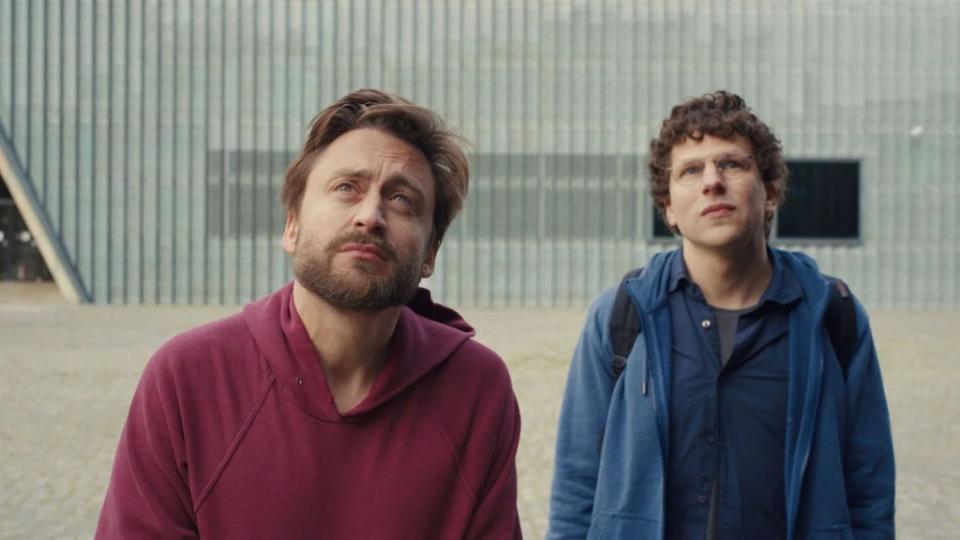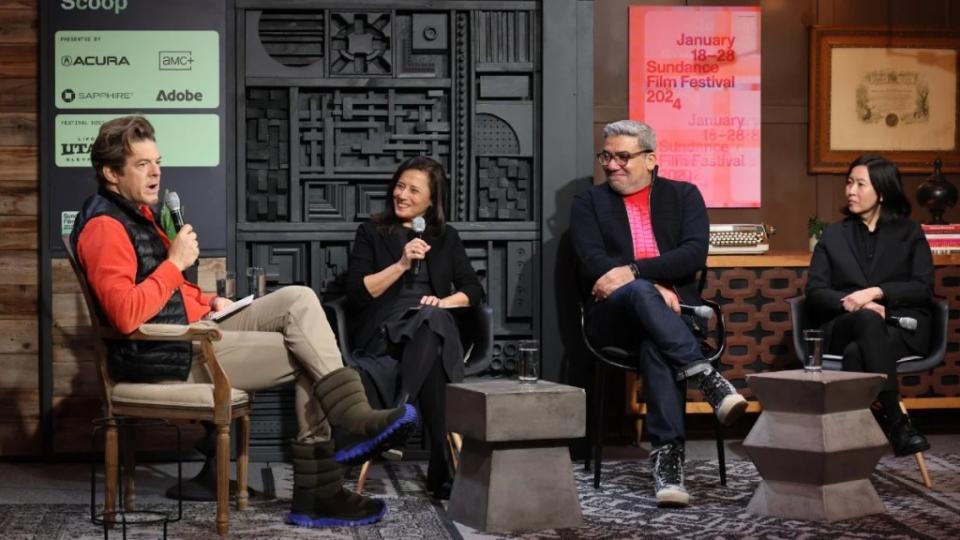At Sundance, Indie Film Struggles to Find a Working Business Model
At an early morning breakfast at an elegant private Park City home above Main Street at the Sundance Film Festival, a group of business leaders, film devotees, producers and media executives gathered to ponder the broken state of independent film.
Ideas were floated over eggs and fruit with shaved gold leaf — from building micro-communities for paid content, to enticing brands to invest more, to pressuring billionaires to pour more of their capital into indie film.
Ultimately, the group reached conclusions similar to those gathering down the hill: The business model for independent film isn’t working at the moment.
The why is pretty clear. As streaming has taken over Hollywood as the dominant mode of entertainment viewing, it has left scraps where a robust theatrical business used to be for indie film. And it has zapped away the vestiges of a longer tail of revenue, whether DVDs or cable television rights for arthouse distributors and studio-owned labels alike.
These days after an arthouse distributor releases a movie in theaters, it has to find a streaming platform to buy it, in order to drive additional revenue, explained independent producer Cassian Elwes, who has attended the festival for over a decade. “They used to have output deals with Cinemax or HBO. Now they have to go sell one movie at a time to streamers. So it makes them nervous to buy films, gambling whether they will ultimately be sold to SVOD [Streaming Video on Demand],” he said.
As Lucas Shaw at Bloomberg pointed out this week, the number of “independent” movies to surpass $20 million at the domestic box office in recent years is down about 30% from 2018 and 2019, according to Comscore. The three biggest independent movies of last year were the conservative “Sound of Freedom,” Taylor Swift’s concert film, “The Eras Tour,” and “Creed III” from MGM.
The tech takeover has also created a weird distortion in the marketplace. Tech-owned streamers — Netflix, Amazon, Apple — can pay almost anything they want for a buzzy Sundance movie, regardless of the return on that investment. That makes it impossible for competitors to do a basic financial analysis on what they might bid for a film and it leaves smaller distributors competing for whatever is left.
This year, the word all across Sundance was that streamers are less interested in independent film than a few years ago, preferring to fund movie production internally or lean on movies that they’ve licensed.

“It’s never an easy process selling a film, with all the challenges you’re continuing to see for independent films being acquired and distributed, and being successful,” said Jamie Patricof, whose film “Exhibiting Forgivenness” starring Andre Holland is playing in competition. “As a producer with a film to sell it’s no secret that the film business overall is changing and evolving. The myth of the overnight multimillion-dollar sale has been gone for a long time for most films, and I’d argue it was an unhealthy process.”
But there are always exceptions to these rules, like “Past Lives,” a 2023 Sundance acquisition by A24 that has won awards and accolades (including a Best Picture nomination) and $22 million at the global box office. “Coda” from Sundance in 2021 went the distance to Best Picture after Apple paid a stunning $25 million. Then again, Netflix paid $20 million for “Fair Play” last year, but has not seen the film get awards traction. (And of course, there is no streaming data to be found.)
This year, Netflix has already shelled out $17 million for “It’s What’s Inside,” a horror film in the midnight section, while “A Real Pain” written and directed by Jesse Eisenberg, sold to Searchlight Pictures for $10 million on Sunday. And late Tuesday, Neon secured worldwide rights to Steven Soderbergh’s visually unique ghost story “Presence” for an undisclosed sum.
Festivals are struggling
The pressures on the business model for independent film are squeezing festivals as well. Even Sundance, the premiere global showcase for the sector, is financially struggling, presenting fewer films than in previous years and using fewer venues. And apparently the festival is considering moving the venue from Park City as its contract comes up.
Other festivals are facing even harsher realities.
Elwes blamed the festivals for programming non-commercial films at a time when the movie business desperately needs to show a little leg.
“They’re showing films that don’t have wide audience, by their very nature,” he said. “They’re socially conscious, gay cinema, etc. But you have to put commercial films in the pipeline as well.”
He continued: “That’s another problem — there used to be lots of stars here. This year there was Kristen Stewart, Pedro Pascal, that’s it. But that’s what drives the buyers here. Part of the excitement was buyers rubbing shoulders with movie stars, making them feel like they’re in the movie business, having a big glamorous weekend with stars. None of that is going on.”
As if to prove Elwes’s point, this year WME had no lounge or anchor presence at Sundance because not enough of the agency’s clients were present to make the investment worthwhile, according to knowledgeable insiders.

Another sign of the times: Decision-making executives at some studios (including Apple, I’m told) did not bother coming to Park City. They’re watching movies remotely via links, not bothering to experience the film with an audience — one of the big advantages of Sundance.
Still, Josh Sapan, the former CEO of AMC Networks who is now acquiring films for the company’s streaming platforms, had a counter view.
“The creative work has never been stronger, and that’s the first, second and third most important thing,” he said in a chat at the DoubleTree hotel (formerly the Yarrow), a hub of festival activity. “Changing the means of consumption is external and driven by tech. It’s in transition, of course. And it will be in transition. Streaming is disruptive. But from the system point of view, there are opportunities.”
Lack of capital
The last decade drew billionaires to independent film as low interest rates swelled bank accounts and the wealthy looked to place money in some high risk, high prestige properties: indie film.
But that has dried up as the era of low interest rates is over, and apparently billionaires are back to seeking more reliable returns on their cash.
Asked at the private breakfast what filmmakers needed most, the answer came back: capital.
Where will it come from? It’s not entirely clear. And as the business model feels shaky, less-established creatives fear they will be left out of the coming solution.
“We are not being considered, we’re not in the conversation,” said Iyabo Boyd, the founder of the advocacy group Brown Girls Doc Mafia, while chatting at the Netflix brunch for documentary filmmakers. “The trickle-down to us is pennies, half pennies, quarter pennies that everyone else is trying to get.”
Boyd added: “It’s scary. I’m concerned that we are not including voices from people of color, and not considering the realities for a filmmaker or executive of color.” She added: “You have so much pressure just to survive.”
The post At Sundance, Indie Film Struggles to Find a Working Business Model appeared first on TheWrap.

